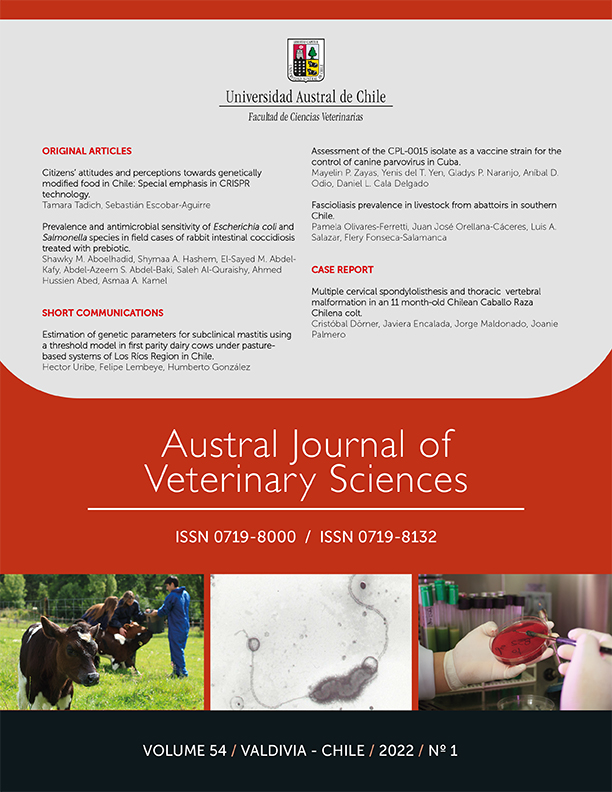Prevalence and antimicrobial sensitivity of Escherichia coli and Salmonella species in field cases of rabbit intestinal coccidiosis treated with prebiotic
Contenido principal del artículo
Resumen
Coccidian infection may promote the proliferation of gut bacteria of the family Enterobacteriaceae. Bacterial infections by members of this family in rabbits can induce a negative impact on their health and lead to high mortality, especially in young individuals. This study aimed to investigate the effect of prebiotic treatment on Escherichia coli and Salmonella species during natural intestinal coccidiosis in rabbits. Forty-five rabbits were selected from a rabbit farm in Beni-Suef, Egypt. Out of the 45 rabbits, 15 were coccidia-free and used as the negative control group (NC group) and 30 were naturally infected with coccidia. The infected rabbits were randomly divided into two equal groups, the positive control group (PC) and the prebiotic treated group (PT) which was orally treated with prebiotic for 8 successive days. Faecal oocyst count was assessed daily during the course of treatment. At 8 days post-treatment, 5 rabbits from each group were euthanised for the microbiological examination of the intestinal tract. On day 8 post treatment, the PT group showed a significant (P<0.05) reduction in the oocyst count (5.33 x103 ± 0.89) with a significant (P<0.05) decline in the prevalence of E. coli and Salmonella (66.7 % and 26.4%, respectively). The PC group showed highly a significant oocyst count (21.67x103 ± 0.82 OPG), with a significant increase in the prevalence of E. coli and Salmonella (86.7 % and 46.7 %, respectively). The NC group remained coccidian free and exhibited only E. coli with no Salmonella infection. The in vitro susceptibility test showed that E. coli isolates were highly resistant to most of the tested antimicrobials while Salmonella isolates showed variable resistance profiles. In conclusion, the prebiotic treatment significantly reduced the prevalence of E. coli and Salmonella infections coexisted with intestinal coccidiosis naturally infected rabbits.

